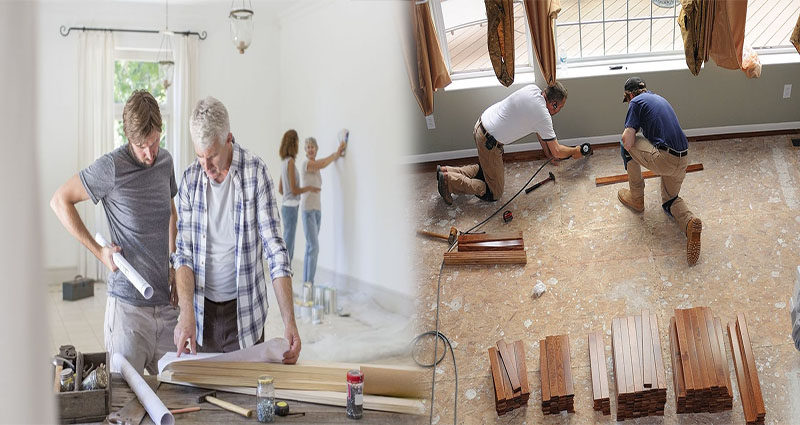Before you embark on a home renovation project, it’s important to take several steps. These include laying out flooring from wall to wall, installing fixed elements, obtaining permits, and budgeting. If you aren’t able to complete the entire project on your own, it might be worthwhile to hire a professional for assistance.
Laying flooring from wall to wall
If you are doing a home renovation, you may want to lay flooring from wall to wall. There are a few important things to consider when laying flooring. For one thing, it’s important to use a plumb line to ensure that your flooring won’t sag. A plumb line is a string with a weight at one end. This line helps you determine where the top and bottom corners of a wall are. You should also use a chalk line to mark the bottom of a wall.
Before you start laying flooring from wall to wall, make sure you have prepped the walls. This way, you don’t have to deal with dust or long curing time. Paint can take a while to dry, which can create bottlenecks during your renovation.
Installing fixed elements
Interior finishing is the part of home renovations that deals with all the “behind the scenes” elements. This work is typically performed concurrently with the rebuilding phase. It includes anything inside the walls, from minor plumbing adjustments to full replumbing and rewiring of the home.
Applying for permits
Applying for permits during a home renovation is an important part of the process. While the process is not particularly exciting, it is required by law and offers great protection for your new home. These permits will ensure that your home is safe, solid, and inviting. Here are some tips for obtaining building permits during a home renovation.
First, you must check if the renovation is structural or not. The reason for this is that some renovations are exempt from building permits, while others require one. Building permits are issued by local building departments, most often the city or county government. While some jobs are not regulated by the building department, others require permits such as electrical work, plumbing, and mechanical work. Make sure you contact your building department and ask them if your renovation requires a permit.
Budgeting
One of the first steps in planning a home renovation is to create a budget. You can do this by researching materials and labor costs. Talking to contractors can give you an idea of what to expect, and you can also do some research online. However, you should note that actual costs might be higher than the budget.
Your budget should be around 10 to 20 percent higher than the total cost of the renovation, but it should still be realistic. The extra money is intended as a buffer in case you run into unexpected expenses. Before creating your budget, gather estimates for each item on your list. Remember to factor in hidden costs, such as hiring an architect.
Cleaning up after renovation
Cleaning up after a home renovation can be stressful. You need to be patient and work step by step to get the job done. Start by vacuuming the floor and focus on cleaning the areas that are not usually cleaned, such as under furniture or curtains. You should also wipe down any surfaces that have been affected by the renovation. To make the process easier, you can hire a professional cleaning service to do the work for you.
After a home renovation, there will be lots of dust, debris, and dirt. Cleaning up the mess is important so that you can enjoy your new space. If you hire professionals, you can be sure that the work is done to the highest quality.











